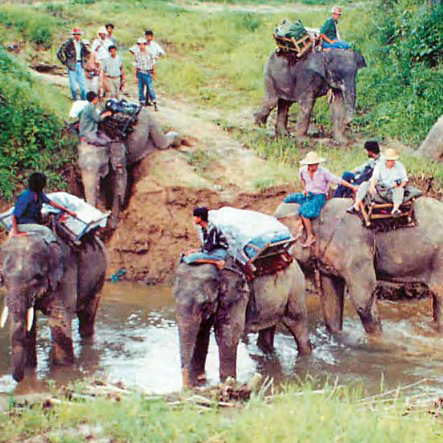Research & Article

Population Evaluation of Asian Elephant (Elephas maximus) in Commercially Exploited Habitats of Myanmar.
By Surendra Varma, U Ye Htut, U Uga
Published on 16 June 2024
Natural Resource and Environmental Management
Location of original sources
Natural History Bulletin of the Siam Society (NHBSS) , Vol. 56, No. 1, 2008
Download
A study on the status of the Asian elephant (Elephas maximus) was initiated in Myanmar with the objective of preparing a conservation plan for elephants in selected locations of the country. Five forest reserves of the Bago Yoma (central Myanmar), seven forest reserves in Rakhine Yoma (western Myanmar) and Alaungdaw Kathapa National Park (AKNP) of northern Myanmar were the survey sites. The indirect method of estimating elephant density from the elephant defecation rate/day, dung decay rate/day, and dung density estimates was used. The estimated mean daily defecation rate/day was 20.0 for Bago Yoma, 19.0 for Rakhine Yoma and 23.0 for AKNP. The mean daily dung decay rate/day was 0.072, 0.005 and 0.009 for Bago Yoma, Rakhine Yoma and AKNP, respectively. The mean elephant density for Bago was 1.62 (95% CI = 1.49-1.75) and for Rakhine it was 0.05 (95% CI = 0.04 0.005) and for AKNP it was 0.6 (95% CI = 0.528-0.74). Elephant dung density and elephant density varied substantially for Bago Yoma and Rakhine Yoma Reserves. The estimated elephant density for both Bago Yoma and AKNP appear to be very high compared to the earlier surveys. For Bago the result could be due to a very high dung decay rate that may not be representative of the entire wet season or for regions outside the observation area. Sample size for some reserves was very low, hence, laying more transects is recommended for these reserves. Additional dung decay rate experiments, particularly during the wet seasons, and similar systematic surveys covering other regions of the country, are desirable.